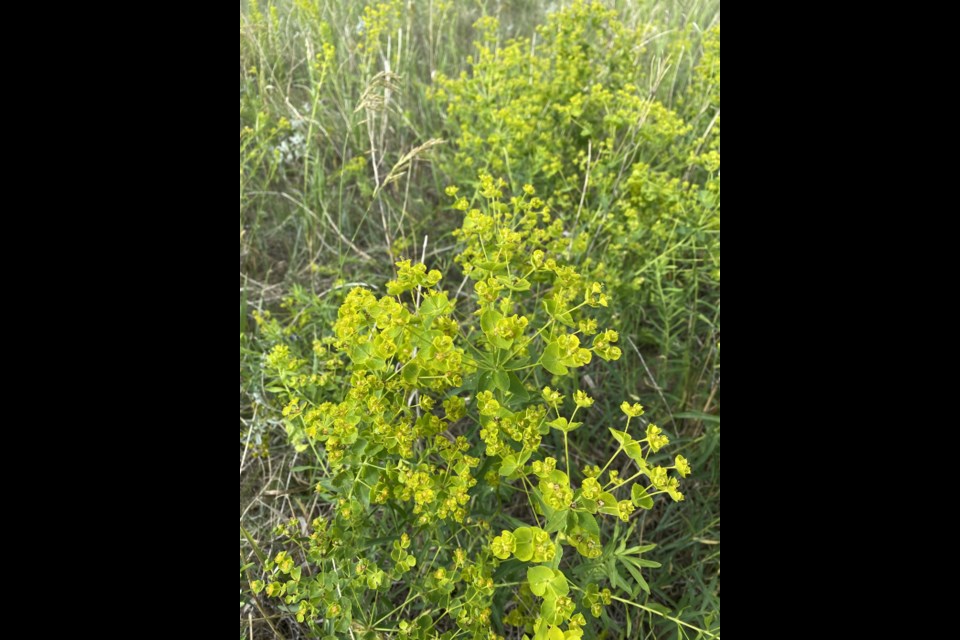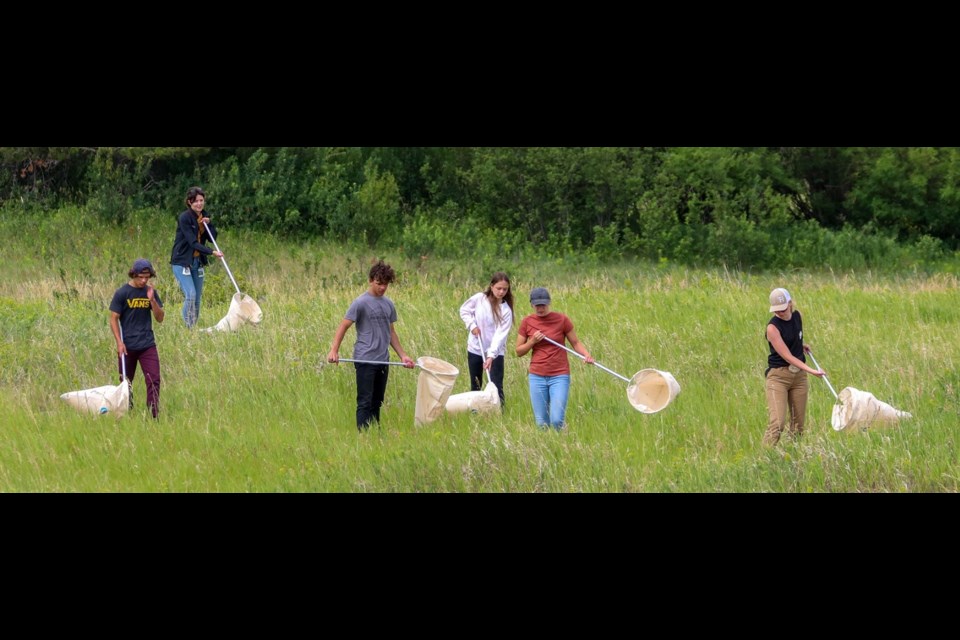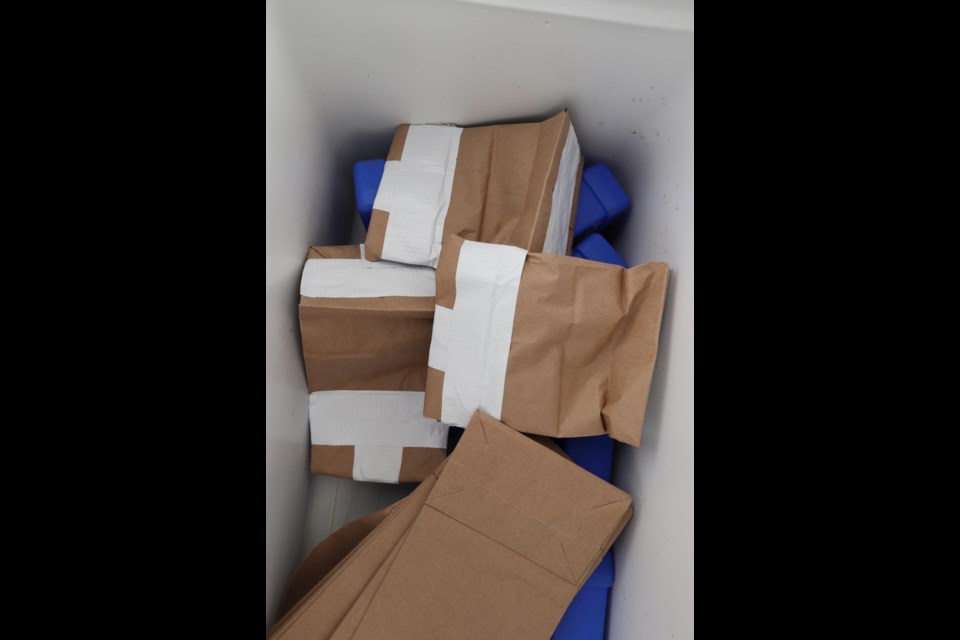Leafy spurge might look like a regular prairie plant, but it is an invasive species that destroys native flora and should be eliminated wherever it is found to prevent further growth.
A tourist contacted the Moose Jaw Express recently and said that, after driving through the community in early July, she noticed a large infestation of leafy spurge along the riverbank, especially near the old hospital site. She pointed out that if the seeds from the plant contact the water, the infestation would “spread like crazy.”
With this concern in hand, the Express reached out to city hall and the Moose Jaw River Watershed Stewards (MJRWS) for comment.
City hall
Parks supervisor Daily Lennox said in an email that city hall is aware of the leafy spurge problem throughout the community and has a program to combat this plant pest.
“Leafy spurge is a dangerous weed to pastureland. That’s where the concern is,” she said. “What we do with this is as follows: we mow or weed-whip the flower heads before they go to seed … . Then in the fall we have the plants sprayed. We find it most effective to spray after the first light frost.”
The city is working with the Rural Municipality of Moose Jaw on this issue, Lennox continued. Besides the old hospital site, the parks department has also discovered leafy spurge at the former Wild Animal Park, throughout Wakamow Valley, and where the municipality has leased pastureland.
Two other invasive species plants that parks staff know about include purple loosestrife and scentless chamomile.
“Please keep in mind, we can only control what we can safely manage,” Lennox added. “We cannot put staff at risk for mowing, weed whipping or spraying (because some) of these weeds are on slopes that are too steep or too close to water.”
Moose Jaw River Watershed Stewards
There are many leafy spurge infestations this year in Moose Jaw — just as in past years — while this green-yellow weed is hard to control because it spreads by seeds and roots, said Carmen Kaweski, MJRWS executive director.
The main locations the group has seen leafy spurge are along the river, in Wakamow Valley, and on Highway 1 outside Moose Jaw.
Chemicals can eliminate the weed, but that is not advisable around water, she continued. However, goats, sheep and beetles can be used to eat the plant and manage infestations.
Sheep and goats have been successfully used in Moose Jaw in the past to combat leafy spurge. However, to use them again, city hall would have to find a herd and shepherd to guide them.
People should pull out the plant if there is a small patch, while they should spray with chemicals if there is a large patch.
“It’s something that we need to stay on top of,” Kaweski said, noting it’s prevalent on abandoned fields, construction sites and slopes. “It spreads fairly easily and it’s very aggressive. So, once you have a little patch, it doesn’t take long to take over an area.”
She added that leafy spurge — in Saskatchewan for nearly 100 years —prevents native vegetation from growing, while it is also toxic to cattle.
A creepy-crawly project
One project the MJRWS pursues every year is collecting leafy spurge beetles at Besant Campground near Mortlach and distributing them throughout the Moose Jaw River Watershed area, Kaweski said. This year the group collected 65,000 beetles and distributed 30 bags to producers and area communities.
By releasing the beetles in the same area over five years, it is possible to establish a colony that returns every year, she continued. While the beetles don’t eradicate the leafy spurge, they keep it manageable so it doesn’t spread.
The MJRWS has established one colony on a farm in the RM of Baildon, while it has established a second colony in Wakamow Valley. Since the valley colony has successfully taken root, the group plans to establish colonies elsewhere in the community.
“We’ve had quite the success with the beetles,” Kaweski added.
Visit mjriver.ca for more information.







